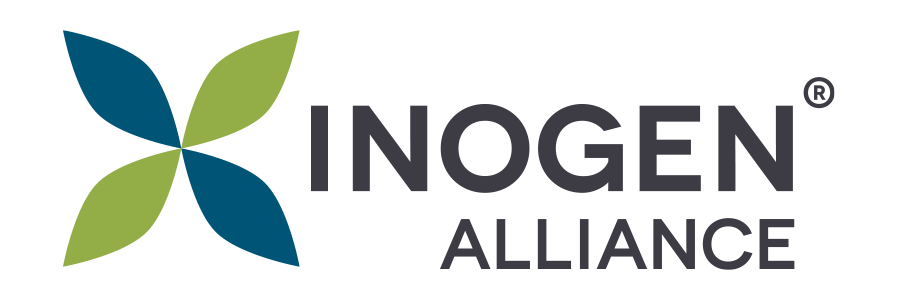How to Compare ESG and Sustainability Reporting Standards

How To Compare ESG and Sustainability Reporting Standards
In the modern business world, it has become increasingly important - and relevant - for companies to communicate and disclose non-financial environmental, social, and governance (‘ESG’) information. Although many drivers for doing so (‘why’) can easily be distinguished, the ‘how’ is still ambiguous and challenging to many companies. Over the recent years, we’ve seen multiple frameworks, reporting standards, and other initiatives evolve, aimed at collecting and structuring ESG information for both internal and external use. Within this maze, we distinguish:
- Agendas that help drive corporate action on sustainable development and Corporate Social Responsibility (‘CSR’);
- Alliances and networks that help companies build capacities (knowledge) and share best practices in the field of sustainability and CSR;
- Raters and rankers that send out surveys or questionnaires to obtain ESG information from companies in order to structure that information and allow for comparability;
- Certification schemes that help companies get recognition for ESG performance;
- ESG or Sustainability Reporting Standards that provide a set of guidelines for assembling a stand-alone report or integrated report;
The variety of options and overload of information makes it complex for companies to determine which ESG framework or standard is right for them. This article wants to bring clarity, focusing on ESG reporting standards that are used to draft (stand-alone or integrated) ESG and sustainability reports. Don't miss the first blog of this series explaining ESG and Sustainability reporting and why it's important.
What to report on/disclose?
A core element of each ESG or sustainability report is a materiality analysis, a process that defines the ESG topics to be included in the report. In order to define these ESG topics, ask yourself: “Who is going to read this report? Who is requesting the information from the company? Is it shareholders, investors, directors, customers, employees, NGO’s or all of these stakeholders?” Your audience will define what ESG content to cover in the report. In other words, ESG Reporting Standards provide guidance in defining material ESG issues for a certain audience and disclosing information on how your company is dealing with these issues.
We distinguish three different approaches to materiality within the range of ESG reporting standards:
- Financial-driven materiality analysis identifies a subset of sustainability-related risks and opportunities material to a company’s financial condition, operating performance, and risk profile
- Business-value driven materiality analysis focuses on business value creation on the short-, mid-, and long term
- Broader, externally-oriented materiality analysis selects topics that reflect their most significant economic, environmental, and social impacts in consultation with its stakeholders (externally oriented)
Diving into ESG Reporting Standards
Now, let us take a closer look at three well-established international ESG reporting standards, each with its own approach to materiality (above). We will discuss the main characteristics of the SASB Reporting Standards, the GRI Reporting Standards, and the International Integrated Reporting Framework, providing insights into the differences and the complementarity between them.
For each Reporting Standard we will summarize:
- Scope
- Audience
- Approach to materiality
- Input (stakeholders or not)
- Advantages
- disadvantages
|
SCOPE
The SASB Reporting Standards provide guidance to set up industry and sector-specific ESG reports, covering ESG topics across 5 dimensions (Environment, Social Capital, Human Capital, Business Model & Innovation, Leadership & Governance)
|
|
|
AUDIENCE Investors (providers of financial capital) and regulators
|
|
|
APPROACH TO MATERIALITY
Financially driven, meaning that the SASB Reporting Standards distinguish ESG topics that are reasonably likely to impact/pose a risk to the financial performance of the company
|
|
|
ADVANTAGES |
DISADVANTAGES |
|
The SASB Standards are designed to ensure that providers of financial capital have access to comparable, consistent and reliable data. Approximately 75% of the accounting metrics in the SASB Standards are quantitative
The SASB materiality map presents a list of material ESG issues on an industry-by-industry basis, allowing users to compare and contrast the materiality of more than 40 issues across industries and sectors
|
The SASB Reporting Standards limit companies’ own prioritizing exercise by offering its materiality map, leaving less space and nuance for company-specific material ESG risks and opportunities
The SASB Reporting Standards materiality analysis is an internal process, concluded without consent or input of stakeholders
The SASB Reporting Standards are not focused on ESG issues that are material for other than ‘financial’ stakeholders (e.g. customers, the environment, and surroundings of the company) |
The International IR Framework by the IIRC
|
SCOPE The international IR Framework provides connects sustainability disclosure to reporting on financial and other capitals. The overall purpose of which is to disclose how a company creates value across six capitals (financial, manufactured, intellectual, human, social and relationship, and natural capitals) |
|
|
AUDIENCE Stakeholders whose primary use of the information is to make economic decisions |
|
|
APPROACH TO MATERIALITY IIRC refers to a material issue as one that substantively affects, or has the potential to substantively affect, the organization’s strategy, its business model, and one or more of the capitals it uses or affects in the short, medium, or long term
|
|
|
ADVANTAGES |
DISADVANTAGES |
|
The International IR Framework guides companies in setting up one, integrated report combining financial results and non-financial significant impacts
The International IR Framework provides KPIs that combine financial measures with other components (e.g. the ratio of greenhouse gas emissions to sales) |
The International IR Framework’s materiality analysis is an internal process, concluded without consent or input of stakeholders
The International IR Framework may be perceived as rather complex and less intuitive to users in comparison to other ESG reporting frameworks |
GRI Reporting Standards
|
SCOPE The GRI Reporting Standards identify material ESG impacts across all its activities and business relationships. It focuses on ESG topics which pose risks to both the company and its environment (prior to identifying opportunities) |
|
|
AUDIENCE A diverse group of stakeholders, varying from investors, customers, employees, natural environment, vulnerable groups, to society in general |
|
|
APPROACH TO MATERIALITY The GRI Reporting Standards adopt a double materiality concept, identifying both ESG issues that (potentially) have a significant financial impact (i.e. issues that are relevant to investors), and issues that will influence the assessments of other stakeholders (topics that impact people and the environment outside the organization) |
|
|
ADVANTAGES |
DISADVANTAGES |
|
The GRI Reporting Standards provide guidance for a thorough and collaborative ESG materiality analysis, taking into account main stakeholder perspectives and expectations The GRI Reporting Standards focus on value for the company, society and the environment which enhances the company’s engagement with the United Nations Sustainable Development Goals |
The GRI materiality analysis may be perceived as resource intensive, since the company is expected to consider impacts associated with its sector, products, geographic locations and specific circumstances. It is also requested to include third-party analyses and reports, and to verify the analysis this with the applicable GRI Sector Standards. |
How to choose a certain ESG/sustainability reporting standard?
The ESG Reporting Standards described above help companies set up stand-alone or integrated reports in which they can disclose non-financial information related to ESG topics. As we mentioned before, the selection of these topics and thus the content of the report varies across different standards. So how to choose? Perhaps these parameters could be helpful:
- Desired audience of the report
- Approach to materiality
- Scope and complexity of the materiality analysis
- Importance attached to stakeholder input
Depending on the relative importance or weight your company attaches to each of these parameters, a certain standard may be preferable.
|
|
Audience of the report |
Approach to materiality |
Scope of materiality analysis |
Stakeholder input |
|
SASB |
Credit providers |
Financially-driven |
Industry/sector level |
N/A |
|
GRI |
Various stakeholders |
Double materiality |
In depth company specific |
Yes |
|
International IR framework |
Credit providers |
Business value driven |
In depth company specific |
N/A |
In conclusion: towards uniformity in sustainability reporting?
Is it however necessary to choose one ESG Reporting Framework or Standard over another? Rather than substitutes, you may argue that the reporting standards are complementary to each other. In practice, companies use different frameworks next to each other in order to provide all key stakeholders with the relevant information they need.
The difficulty remains in the comparability between standards because they all adopt their own set of KPIs and disclosures, making it difficult for the reader (e.g. potential investors) to compare companies and their ESG performance. Due to this concern, important ESG standard-setters and frameworks (GRI, SASB, CDP, IRCC, and the Climate Disclosure Standards Boards (CDSB)) recently came up with a joint statement of intent to help companies understand how they can use the respective standards together, as one comprehensive corporate reporting system. In the light of COP26, these initiatives published guidance on how to combine their frameworks to report in line with the TCFD recommendations.
Given this recent climate and ESG-related regulatory evolutions, and due to the increasing pressure from investors and customers, ESG reporting will become an established best practice among businesses. In the following years, we expect ESG reporting standards and frameworks to collaborate even more intensively to facilitate the process and remove barriers to compare ESG performance and reports. Check out our services to help clients begin this process or enhance their sustainability and ESG reporting globally.
Inogen Alliance is a global network made up of dozens of independent local businesses and over 5,000 consultants around the world who can help make your project a success. Our Associates collaborate closely to serve multinational corporations, government agencies, and nonprofit organizations, and we share knowledge and industry experience to provide the highest quality service to our clients. If you want to learn more about how you can work with Inogen Alliance, you can explore our Associates on this webpage or Contact Us. Watch for more News & Blog updates here and follow us on LinkedIn.

